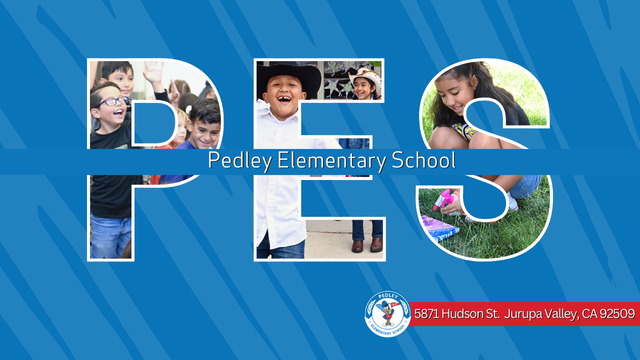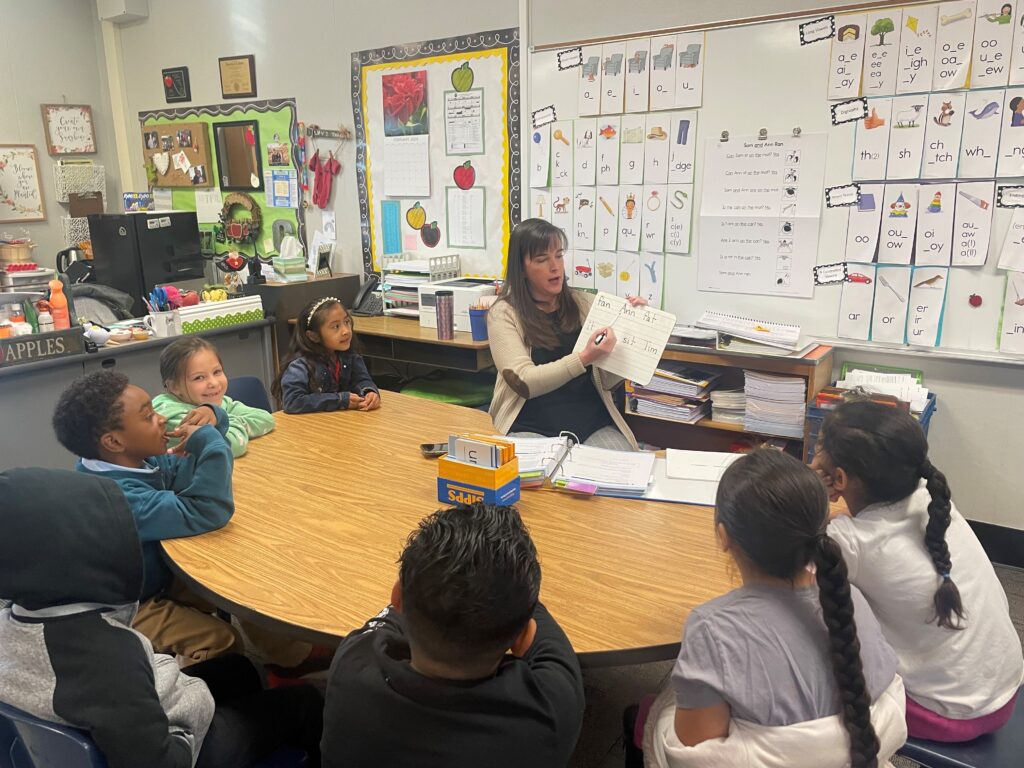
We spoke with Nancy Galvez, principal at Pedley Elementary School, about how the school uses SIPPS and a “Walk to Read” model to help their students master foundational skills.
Pedley Elementary is a Dual Immersion TK-6, Title I Schoolwide school, with an enrollment of 740 students. Pedley is one of seventeen elementary schools in the Jurupa Unified School District located in the city of Jurupa Valley, in Riverside County, California.
Thanks for taking the time to speak with us, Nancy! Tell us a little about yourself, Pedley Elementary, and the students that you serve.
I love being a principal, but I’m a teacher at heart. This is my 26th year in education.
Prior to becoming a principal I taught for 17 years, and was a District Reading TOSA for five years. This is my third year as Principal at Pedley.
We are a TK–6 grade school serving 753 students. Pedley is a Dual Immersion School and we also have Functional Skills SDC TK–6. We are a Title 1 school and our demographics is predominantly Hispanic.
What is the most rewarding part of being an educator for you? What do you especially enjoy about your current role?
One of the most rewarding aspects of being an educator is building connections with students and witnessing their academic growth. There’s nothing quite like seeing that moment when learning clicks. The smile on a student’s face when they truly understand something is priceless.
I particularly enjoy visiting classrooms and engaging with students about what they’re learning.
One of the most rewarding aspects of being an educator is building connections with students and witnessing their academic growth.
How did you first become interested in SIPPS?
During my time as a District Reading Teacher on Special Assignment (TOSA) for West Covina Unified, we launched a district-wide reading initiative to ensure all students were reading proficiently by third grade. Our superintendent introduced us to the principal of Newport Beach Elementary, where SIPPS had been successfully implemented.
Seeing its effectiveness, I worked closely with my director to bring SIPPS to all eight of our elementary schools, focusing on grades K–3. Knowing how successful SIPPS was, I later implemented SIPPS with a Walk to Read model at my current school, Pedley, Elementary.
How long has Pedley been implementing SIPPS? Tell us a little about the implementation.
In the fall of 2023, during my second year as principal at Pedley, we implemented SIPPS, starting with a “Walk to Read” model for grades K–2. Every K–2 student was placed in a SIPPS group, and during their grade-level intervention block, they joined their reading group teacher for 30 minutes of targeted small-group reading intervention.
This year, we’re expanding the program to include grade 3, as well as grades 4–6 for Tier 3 intervention.

What were some key ingredients or planning decisions that set you up for success as you launched your implementation?
The key to successfully launching SIPPS was understanding the “why” behind it and building a solid foundation first.
In my first year as principal, we analyzed our data and recognized the need for change—our students were 90.1 points below standard in English Language Arts.
In spring 2023, I had my teachers attend science of reading training, which laid the groundwork for introducing SIPPS. I presented the SIPPS program to my teachers, preparing them for the “Walk to Read” model we planned to implement in the following school year.
In 2023-2024, I trained classroom teachers, intervention teachers, and bilingual language tutors in SIPPS and launched the “Walk to Read” model. My grade 3–6 teachers also received science of reading training, leading to a full K–6 implementation of SIPPS this year.
What’s crucial is that my teachers know they can rely on me—whether it’s modeling a SIPPS lesson or stepping in to support them with any part of the program they’re unsure about during my classroom walkthroughs.
What recommendations would you have for other leaders newly trying to implement this model?
I think that for any implementation to be successful the school leader needs to be fully engaged in the training with the teachers and be a resource.
What do you appreciate about SIPPS? What do teachers appreciate about it?
I appreciate that SIPPS is both systematic and targeted. The routines help train students’ brains to focus on the learning process rather than the instruction itself.
Teachers value that all the materials needed for each lesson are provided, and once students master the routines, the process becomes automatic.

What have you noticed about students’ learning and engagement? What have teachers noticed?
We’ve all noticed a remarkable improvement in our students’ reading skills. Some of our first graders who participated in SIPPS as kindergarteners last year are already reading at the start of first grade!
Has your school data reflected what you’ve noticed in students’ learning and engagement?
Yes, even in the short time we’ve been implementing SIPPS, we’ve seen significant growth in reading.
Our students’ ELA scores on the California Assessment of Student Performance and Progress (CAASPP) increased by 16%, and we’ve seen remarkable gains in DIBELS® (Dynamic Indicators of Basic Early Literacy Skills). Teachers are noticing the progress too—they’re excited to see their students reading and thriving.
What thoughts or insights would you share with a school or district that is considering SIPPS?
SIPPS is both research-based and evidence-driven, and when implemented with fidelity, it delivers results.
***
Related Reading
Hear from Nystrom Elementary Leaders on a Successful Walk to Read Implementation
Learn how California readers are succeeding with SIPPS.
Arizona is Closing Foundational Skills Gaps with Walk to Read and SIPPS
